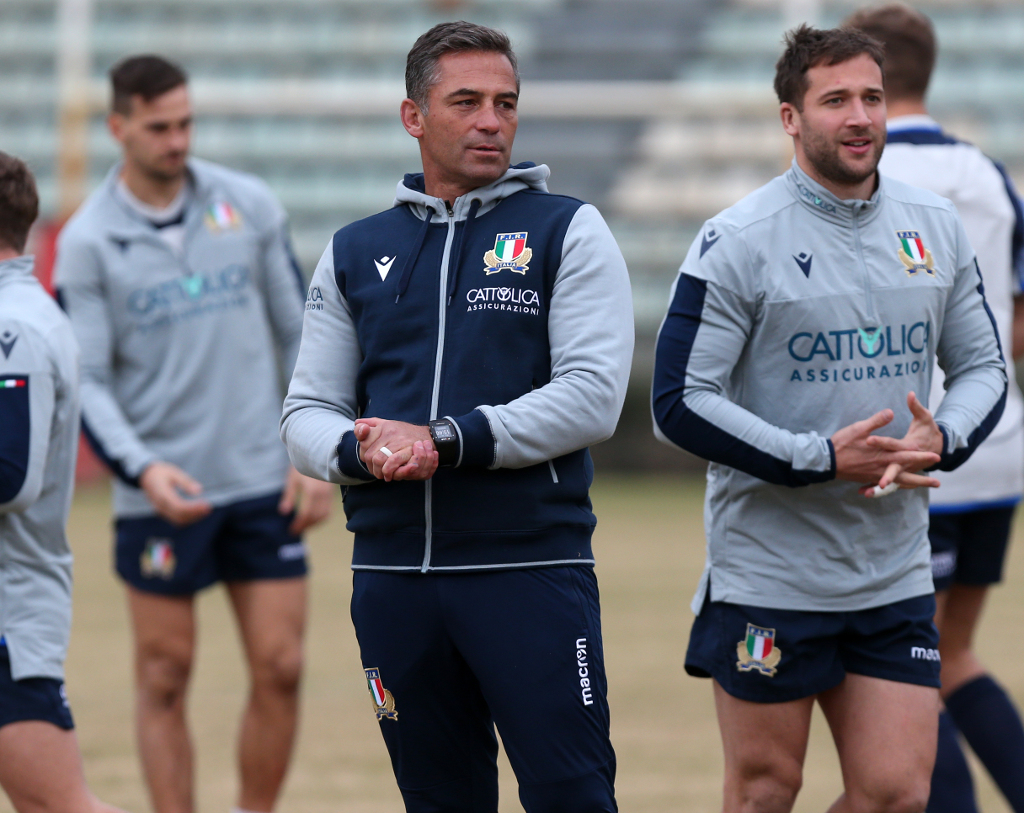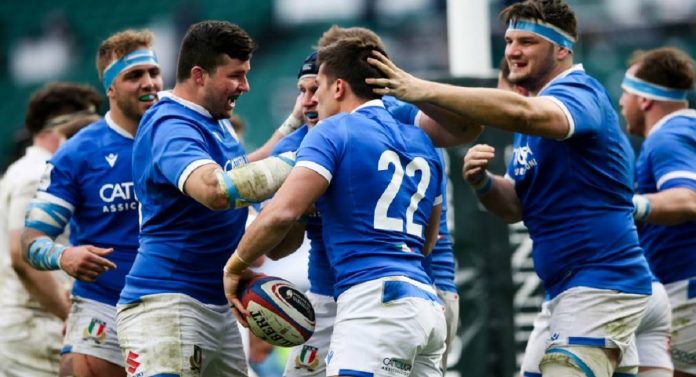Another year, another wooden spoon. The temptation as rugby fans is to look at their position at the foot of the table and write off their tournament as a complete failure. While this may have been the case in previous years, this year there were lots of positives to take from Head Coach Franco Smith’s choice to blood the next generation of Italian Rugby. Here are five takeaways from Italy’s 2021 Six Nations campaign.
1. Back Row Strength
In November last year, it was announced that Gloucester and Italy’s star man, Jake Polledri, was required to have surgery on his knee that would leave him on the side-lines for Italy’s Six Nations campaign. This was a crushing blow for a team that needs every ounce of talent that it can muster and wasn’t really a hole that Franco Smith could effectively fill. Polledri’s tackling, carrying and work on the ground was as good as any in the Italy camp (and probably better).
However, all was not lost for Italy’s loose forwards. The flanking tandem of Johan Meyer and Sebastian Negri showed their quality. The pair regularly post tackle numbers in the double digits and don’t miss many. Meyer chipped in with a try and Sebastian Negri (going into week five of play) sat third in carries made in the whole tournament.
Add Polledri back into the mix in combination with Meyer and Negri and you form what should be a back row which is good enough to compete with most in world rugby. As the post-Parisse era begins to take shape, Italy have a lot to be optimistic about when it comes to their back-row forwards.
2. Garbisi the Great
Paolo Garbisi made his test debut in October of last year in a start against Ireland. Since then, he has gone on to play in eight more tests, starting all of them, attracting the admiration of many a colour commentator along the way. Italy’s young stallion from Benneton Treviso is probably the best fly half I can remember them producing. That’s not to discredit the likes of Tomasso Allen, you can just tell that Garbisi is about to make a leap into rugby stardom.
Italy have in Garbisi a goal-kicker of fantastic quality with Garbisi slotting nine kicks out of nine attempts this tournament. He also shows great promise as a game manager and this makes him, arguably, the most important Italian asset moving forward.
Italy have long lacked a great deal of technical skill that Garbisi brings in spades. Combine this with an experienced and more than capable understudy in Tomasso Allen and, suddenly, Italy’s quality at fly half suddenly looks better than ever.
3. Monty Ioane
Who knew that former Wallaby Digby Ioane’s nephew would become a star man for Italy? The Aussie-born flyer signed up with Benneton Treviso in 2017 and made his Italy debut last year. Whether it’s taking the ball and making something happen in open play, or shearing Darcy Graham in two with an absolutely massive tackle, Ioane has impressed everyone that watched him this Six Nations.
With two tries to his name in his debut campaign, Ioane finds rounds out what should be a quality set of outside backs when at a full contingent. Ioane and his wing partner Mattia Bellini both offer pace and elusiveness to this Italian backline. Add Wasps standout Matteo Minozzi into the equation and, once again, Italy have the talent to mix it with anyone.
4. Crying out for Consistency at the Set Piece
Italy’s scrum was a mixed bag this tournament. The Italians only lost five scrums against the head this tournament and three of those came against Ireland who have depth at prop only bested by the likes of New Zealand and South Africa. However, they consistently failed to put the opposition scrum under any pressure, cumulating in Marco Riccioni being substituted after just over half an hour of being mauled by Scotland’s Rory Sutherland.
The lineout performance was even worse, regularly losing their own throws and, perhaps more damningly, failing to pressurise the opposition set piece. Most amateur rugby players will recognise the importance of the set piece to team success. Conceding scrum penalty after scrum penalty only serves to give the opposition territory and doesn’t allow Italy’s talented backs the opportunity to play whilst opposition forwards are tied up. The golden hour for pacey backs, as it were.
Italy started with a pair of 23-year olds at prop against Scotland that both had no more than ten caps before the 2021 Six Nations started. When competing against wily veterans like Cian Healy, well versed in ‘the dark arts of the scrum’ as Joe Marler puts it, they were all going to struggle. However, with time, they should improve.
Quality props don’t go on trees, that’s why they tend to have such long careers. Franco Smith will be crossing his fingers hoping that Fischetti and Riccioni will grow into their roles.
5. Back Franco

Italy’s squad was a young one for the 2020 Six Nations. The initial squad’s age prior to week one of action was just over 22. In doing so, head coach Franco Smith is demonstrating a real commitment to developing the future of Italian rugby.
You regularly see the coaches of nations with much larger and much more established pools of talent cling on to older talent perhaps a little longer than they should. Smith’s decision to, essentially, push the reset button can only be a positive one in years to come.
The introduction of fresh talent reflects the recent improvement of Italy’s club sides and, hopefully, will result in the continued progression of Italian rugby during this World Cup cycle and beyond.
What did you think of Italy during this year’s Six Nations? Is their young core going to progress into a team capable of winning games or will they forever be bottom dwellers no matter what they do? Did anyone stand out to you during their campaign? Let us know in the comments below, we’d love to hear your opinion.
Here’s where the stats for this article came from: https://www.espn.co.uk/rugby/team/_/id/20/italy
More rugby from thesportsdespatch: https://thesportsdespatch.com/?s=rugby+union
More from me: https://thesportsdespatch.com/author/cellanrhys

